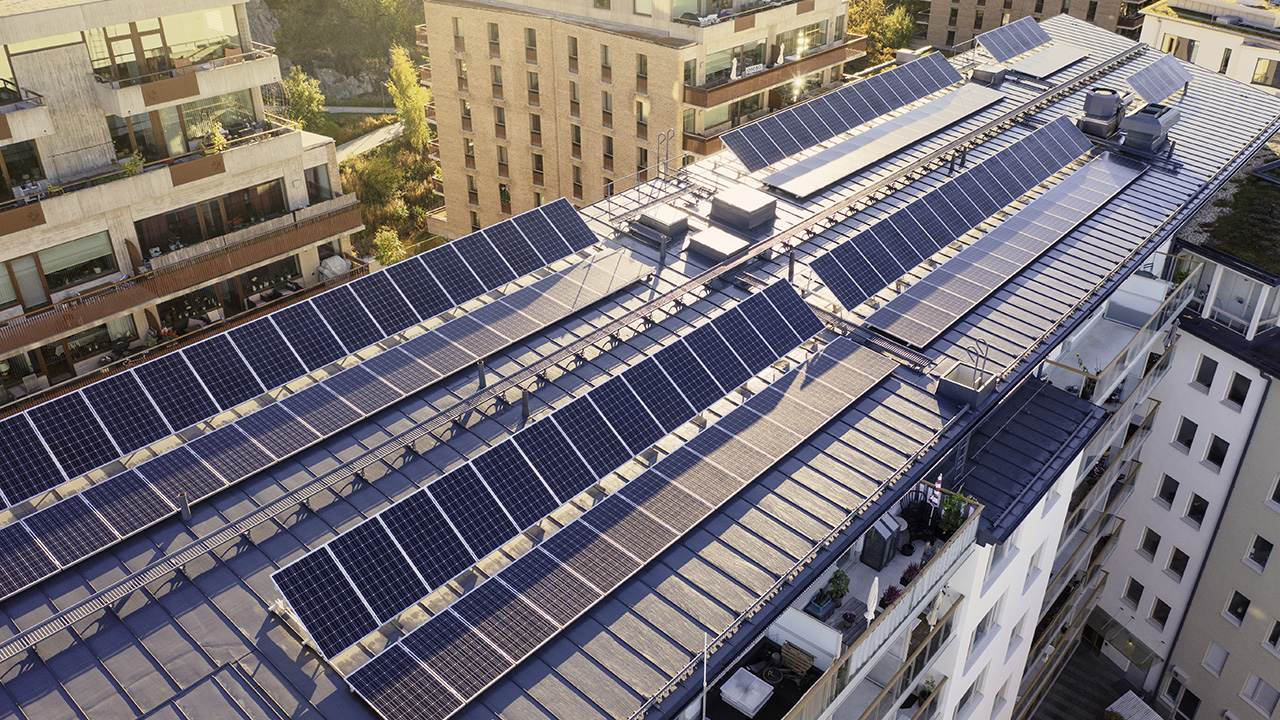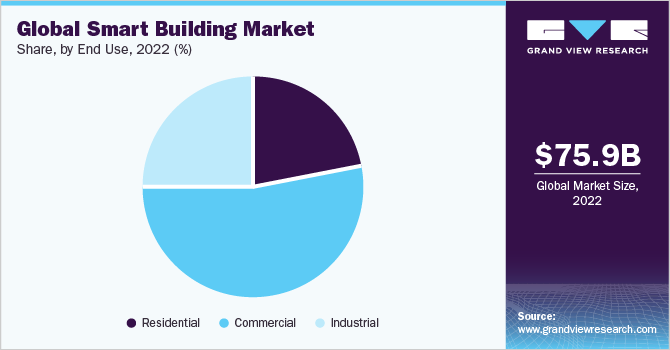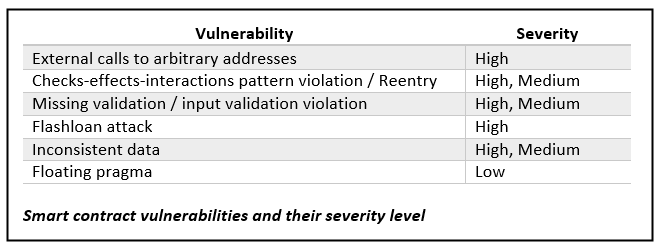The Internet of Things (IoT) technology has revolutionized how we design and build modern buildings. Thanks to IoT, a wide range of
interconnected tools and devices powered by the Internet have turned smart buildings into a reality. IoT applications for smart buildings offer potential benefits to both property owners and occupants. They automate various building functions and streamline resource utilization. Thus, they help increase energy efficiency and reduce carbon footprint for a potentially
sustainable city.
Meanwhile, IoT applications significantly improve the occupant experience. They offer comfort and convenience, as well as provide safety and security. However, there’s more to these benefits than meets the eye.
This blog post covers the IoT applications for smart buildings in today’s business landscape. Discover their use cases and potential benefits to optimize your business operations while contributing to a greener society. Read on.
IoT Applications for Smart Buildings
In today’s business landscape, investing in green technology is best for saving money and improving operations. And when it comes to this, the Internet of Things (IoT) can be a viable solution.
IoT consists of network-enabled devices embedded with sensors and connected to the internet. Think of smartphones, wearable devices, and smart appliances. These technologies can collect and exchange data for remote control, monitoring, and automation.
IoT has begun transforming buildings in multiple ways, whether commercial or residential properties. Interconnected systems and devices enable more intelligent, efficient, and responsive facilities. That’s where smart buildings come into the picture.
Leveraging IoT-enabled green technologies is best for your commercial property or business establishment. Below are the practical use cases for IoT applications in a smart building:

According to Grand View Research, the global smart building market will grow from $75.89 billion in 2022 to $450.53 billion by 2030 at a 26.5% compound annual growth rate (CAGR). Such growth is due to the increasing adoption of IoT, not to mention the following related technologies:
- Artificial intelligence (AI)
- Virtual reality (VR)
- Cloud computing
- Data analytics
- Business information modeling (BIM)

Image source
It’s safe to say that the rapid IoT development has enabled smart building capabilities. IoT applications have empowered property owners and enhanced the occupant experiences. However, they show no signs of stopping or even slowing down.
Smart Contracts for Smart Buildings
A smart contract is a digital agreement that automatically executes based on predetermined operations in your facility. It guides all the stakeholders involved in your building functions. It streamlines processes, such as energy usage, scheduled maintenance, and access control by automating tasks, reducing errors, and boosting overall efficiency.
By partnering with contractors or vendors through smart contracts, you can invest in smart systems and devices for various building functions. However, make sure to address smart contract vulnerabilities to maintain data accuracy, operational efficiency, and legal compliance.

Image source
Discover the benefits of IoT applications for your smart building in the next section.
Key Benefits of IoT for Smart Buildings
IoT paves the way for more innovative devices and clean technologies, transforming the building environment. It proves beneficial in more ways than one, potentially leading to the rise of smart cities globally. That's why companies now integrate interconnected technologies into smart building solutions.
Explore the top benefits of IoT applications for your smart building below:
1. IoT enables automation in building systems
IoT automates various systems in your building by integrating smart devices like sensors and meters. This automation can reduce manual work and accelerate plumbing, electrical, and HVAC system functions. Hence, it streamlines day-to-day operations, enhances efficiency, and reduces downtime.
Here’s how IoT-enabled automation works for various building systems:
- Plumbing system: This system controls the water supply, distribution, and drainage within your building. IoT sensors help monitor water usage, detect leaks, and automate irrigation systems for efficiency and conservation.
- Electrical system: This system manages electricity distribution within your building. Utilize IoT-powered meters and monitors to track usage, optimize efficiency, and detect faults. Likewise, use smart bulbs and sensors to adjust brightness and schedules automatically.
- HVAC system: This system is responsible for your building’s heating, ventilation, and air conditioning. Take Infinitum Electric offering HVAC monitoring solutions, for example. With its predictive maintenance features but smaller carbon footprint, it can “power more with less.”
2. IoT allows for remote monitoring and notification
IoT enables remote monitoring and notification by leveraging security systems like CCTV, access controls, and remote monitoring technologies. Incorporating QR codes into access control systems enhances security further, offering quick and secure entry verification. Ultimately, it helps promote building security and occupant safety.
Below are smart technologies with IoT applications to invest in:
- Security systems: Install devices like cameras, motion sensors, and alarms. Then, integrate them with IoT applications for your business premise’s centralized monitoring. That enhances your threat response and promotes security.
- Access control: Employ IoT for access control systems with technologies like keycards and facial recognition. They allow the regulation of movements and entry for authorized personnel. Meanwhile, they also promote cybersecurity using tools like DNS security.
- Surveillance and monitoring: For advanced surveillance, equip your smart building with networked cameras and sensors through IoT. These technologies enable quick detection and response to suspicious or dangerous events.
3. It promotes energy control and efficiency
IoT systems, including smart thermostats and meters, offer precise energy control and monitoring. They can enhance efficiency and sustainability in your commercial property. By regulating energy consumption, these systems not only reduce utility bills but also improve ambiance, occupant comfort, and overall operations.
Here’s how to leverage IoT for energy control and efficiency:
- Energy-efficient systems: Investing in energy-efficient devices and systems is crucial. For example, opt for LED lighting for electrical systems, energy-efficient HVAC units, and smart thermostats to regulate temperature efficiently.
- Energy usage monitoring: Integrating IoT sensors into electrical, lighting, and HVAC systems enables comprehensive tracking of weather, temperature, humidity, and occupancy levels. This data facilitates smart control adjustments, improving comfort and reducing energy waste.
- Operational optimization: To optimize operations for energy efficiency, consider solutions like Digi XBee® Modules. They simplify energy-saving systems like Lodging Technology's GEM System®. They streamline hotel management with easy installation, remote programming, and enhanced guest experiences.
4. It improves the occupant experience
Integration of smart devices in commercial buildings allows the adjustment of lighting, temperature, and ventilation, improving the experience for everyone. Whether guests enjoy a cozy stay or remote employees feel comfortable, investing in IoT makes your building spaces more pleasant and efficient.
Here's what to invest in to improve your occupant experience:
- Practical smart devices: IoT introduces various smart devices to your building, like thermostats, occupancy sensors, automated shades, and voice-controlled assistants. These technologies empower your occupants by accessing convenient features and customizing their experiences.
- Lighting control: IoT-powered lighting systems adjust illumination automatically based on factors like weather, time of day, and occupancy. They let your occupants improve lighting for comfort and ambiance, enhancing their overall experience.
- Temperature control: Automated HVAC systems and smart thermostats use IoT to regulate indoor temperatures. Your occupants can easily and quickly adapt to changing conditions and preferences, ensuring a comfortable climate indoors.
5. It increases the property value
Cutting-edge IoT technologies like intelligent lighting and dynamic glass enhance your building’s aesthetics and functionality, ultimately increasing its overall value. By integrating decorative elements such as programmable lighting and automated blinds, your smart building will stand out in the market and command a higher property value.

Image source
Smart buildings aren't only highly functional but are visually attractive. Not only do they enhance your building's overall appearance, but they also increase your property value.
Strazzulla recommends the following IoT features for a smart building:
- Decorative lighting feature: LED lighting offers dynamic, customizable displays that enhance your property's ambiance. By synchronizing with other IoT devices, smart lighting adjusts based on time, events, preferences, or occupancy.
- Smart glass solution: Polymer-dispersed liquid crystal (PDLC) glasses adjust transparency and tint. They provide privacy and light control without compromising aesthetics.
- IoT Device Integration: Integrating smart devices creates a technologically advanced environment, offering a polished, futuristic ambiance. This results in visually striking and highly functional smart buildings.
6. It ensures regular maintenance
IoT sensors and asset tracking ensure regular maintenance by proactively addressing facility and equipment upkeep. They help cut costs and boost efficiency by preventing issues before they worsen. Partnering with vendors via smart contracts and employing AI contract review streamlines maintenance processes, ensuring your smart building remains in top condition.
Here's how your partnered contractors can help you perform the following:
- Early detection: IoT sensors monitor equipment and infrastructure in real time. They allow you to identify anomalies and detect signs of wear and tear. You can then promptly address potential issues before they become serious problems.
- Equipment monitoring: Connected IoT devices track building components like HVAC, electrical wiring, and escalators, using predictive analytics to identify potential malfunctions. Proactive maintenance based on these insights can help extend your asset lifespan.
- Building maintenance: IoT-powered data insights enable a shift from reactive to preventative maintenance. Automated alerts and work orders ensure regular maintenance or necessary interventions, improving the overall building performance.
7. It guarantees data centralization, regulatory compliance, and sustainability
IoT ensures data centralization, regulatory compliance, and sustainability by consolidating information from various systems into a single platform. This centralized approach simplifies data management, facilitates regulatory compliance, and supports sustainable practices by providing comprehensive insights for informed decision-making.
Here's how it works:
- Data centralization: IoT consolidates all building information into a unified platform. This lets you gain holistic insights and make informed decisions to streamline your building operations.
- Regulatory compliance: IoT monitoring and reporting help improve your energy, water, and air quality performance. They allow you to meet standard certifications, such as Leadership in Energy and Environmental Design (LEED) and WELL Building Standard.
- Business sustainability: IoT promotes business sustainability with its energy efficiency feature, helping reduce carbon emissions. Ultimately, it can contribute to preserving the environment and saving the planet while doing business.
Leveraging IoT Applications for Developing Smart Buildings

Image source
IoT has paved the way for the rise of smart buildings. It has made commercial properties and business establishments more intelligent, efficient, and responsive to occupant needs. However, the critical role of IoT technologies in business will only continue to grow and develop.
Consider the practical IoT applications for smart buildings. By harnessing the power of interconnected tools and devices, you can boost business functions, building security, energy efficiency, occupant experience, property value, and more.
As you seek to future-proof your property, invest in smart devices, tools, and systems. Ultimately, embrace IoT to create adaptable, efficient, convenient, and user-centric smart buildings!
IoT Applications for Smart Buildings FAQ
What is IoT in Smart Buildings?
IoT in smart buildings refers to the deployment of network-enabled sensors, devices and systems throughout a building (or multiple buildings) to monitor, automate, and optimize building functions — such as HVAC (heating, ventilation and air-conditioning), lighting, security, occupancy, energy usage and indoor environmental quality.
What are some common use-cases for IoT in smart buildings?
Some of the key use-cases include:
- Automated building-automation system (BAS) managing electrical, plumbing and HVAC systems via sensors and remote controllers
- Smart thermostats that adjust temperature based on occupancy, weather and room usage, improving comfort and efficiency
- Lighting control systems that schedule lighting, adjust brightness based on occupancy or daylight, and reduce waste
- Energy-management platforms that analyze real-time usage data to identify savings opportunities and reduce utility bills
- Security and access control systems using cameras, sensors and smart locks to monitor entry points and regulate access
- Predictive maintenance of building equipment (e.g., HVAC, elevators) to detect malfunctions early and avoid downtime
- Environmental monitoring of air quality, humidity, temperature for healthier indoor spaces
- IoT-enabled waste-management systems (e.g., sensors in bins) that streamline collection schedules and reduce cost
What benefits do building owners and occupants gain from IoT smart building systems?
Benefits include:
- Operational efficiency: Automating building systems reduces manual interventions and improves response times
- Energy and cost savings: With smarter controls and insights, buildings use less energy and reduce utility expenses
- Better occupant experience: Comfort, lighting, temperature, indoor air quality and security can all be improved for users
- Sustainability and environmental impact: IoT helps minimize waste, optimize resource usage and reduce carbon footprint
- Data-driven insights: Real-time and historical data flows allow more informed decisions about building operations and maintenance
What should organizations consider before implementing IoT for smart buildings?
Key considerations:
- Connectivity and infrastructure: Ensure building systems, sensors and networks (wired / wireless) can support IoT devices
- Integration with existing systems: Many buildings have legacy HVAC, lighting or access systems; IoT solutions need to work with or upgrade these
- Data strategy: Decide what data is needed, how it will be collected, stored, processed and used for action
- Security and privacy: Protect data (occupancy, usage patterns, access logs) and ensure devices are secure
- Scalability and maintenance: Projects should be designed to scale across floors or multiple sites, and include remote management for devices/sensors
- Clear use-cases and ROI: Start with defined problems (e.g., energy waste, occupant comfort, equipment downtime) and measure before scaling
What future trends are likely in IoT for smart buildings?
- Deeper use of AI and machine learning to predict occupant behavior, optimize resource usage, and drive autonomous control
- Greater focus on sustainability — IoT will play a bigger role in carbon reduction, renewable integration (such as rooftop solar), and smart waste systems
- More personalization of occupant experience — lighting, temperature, environment adapting to individual preferences or usage patterns
- Enhanced interoperability and open standards so sensors/devices from various vendors work seamlessly and data flows are unified
Next Steps
About the Author

Catherine Schwartz is an author with a passion for all things digital. Her articles focus on AI, IoT, and the impact of new technologies on society.